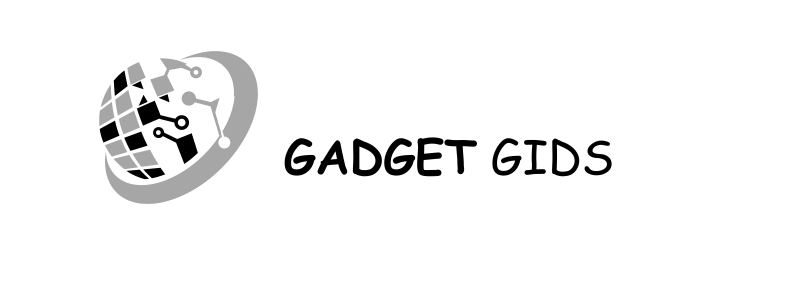As artificial intelligence (AI) continues to revolutionize software development, you must be able to ascertain whether a piece of code leverages AI technologies. You might find yourself auditing a codebase or reviewing open-source projects where you’re curious about what’s underlying.
You can apply this knowledge to understanding how to check if code uses AI to identify machine learning models, natural language processing algorithms, or other AI-driven functionalities. This article will discuss key indicators, tools, and methods of finding whether the codebase uses AI to ensure developers and tech-savvy individuals can distinguish normal codebases from AI codebases.
For further reading on AI, visit Gadget Gids.
8 Ways to Check If Code Uses AI for Enhanced Performance
Detecting AI in Code: A Quick Guide
To check if code uses AI, search for distinct libraries related to AI, such as TensorFlow, PyTorch, or Scikit-learn. These are typical applications of AI projects, indicating the possible usage of machine learning or deep learning models in the code. Review your code for training or inference functions and data-related manipulation functions, which may be typical signs of the usage of AI.
Another way to check if code uses AI is to check the tasks for which the code is designed to perform. AI is likely involved if it manages complex processes like natural language processing, image recognition, or decision-making. Also, look for any references to AI APIs or cloud services, such as OpenAI or Google AI, which often indicate integrating AI capabilities into the code.
How to Identify AI-Driven Code
To check if code uses AI, check which libraries and frameworks are employed in the project. Widely used AI tools like TensorFlow, Keras, and PyTorch indicate that a machine learning or deep learning approach may be part of the code. Examine whether functions related to model training, neural network layers, or data transformations, typically associated with AI-driven processes, are present in the code.
Another way to check is by analyzing the problem your code is trying to address. If the task deals with image recognition, generating text, or predictive analytics, it probably utilizes some AI technology. Also, look for API calls to other AI platforms, like what OpenAI or Google Cloud offers, which can more or less indicate the utilization of AI in your project.
Checking Code for AI Integration
To check if code uses AI, inspect the libraries and dependencies imported. Machine learning or deep learning algorithms could be used if the imported libraries are AI-focused, such as TensorFlow, PyTorch, or Hugging Face’s Transformers. Code snippets dedicated to tasks like training models, optimization, or evaluation of predictions indicate the presence of AI.
It also checks if code uses AI by checking the nature of the tasks it is designed to perform. If the code automates, makes decisions, or uses very advanced data analysis, it probably uses AI. Besides, the presence of AI-driven functionality in the code can be verified by looking at the API calls to AI platforms or services, such as from Microsoft Azure or Google AI.

AI Code Detection Tools and Methods
AI code detection tools and methods play an essential role in identifying the presence of AI components in a codebase. One can check whether code employs AI by starting with static analysis tools that scan for libraries related to AI, like TensorFlow, PyTorch, or Scikit-learn.
Such tools identify dependencies and functions that could use AI tasks like training models or making predictions. For automation, one can use SonarQube or CodeClimate to flag the respective sections of code where it uses machine learning or deep learning algorithms.
Dynamic analysis can also be helpful when you watch the behavior of the software at runtime and find if it is making interactions with AI APIs or doing something like natural language processing or image recognition.
This can be done using specialized platforms monitoring API calls to services like OpenAI, Google AI, or AWS. Combined with a manual review, this will ensure the proper identification of AI elements within the project.
Spotting AI Features in Your Codebase
First, check the code’s libraries and dependencies to check if code uses AI. For instance, popular libraries used in machine learning and deep learning include TensorFlow, PyTorch, and Scikit-learn. The code probably utilizes AI features if you spot such libraries or other AI frameworks. Other ways are to look out for training, evaluation, and prediction functions because those are generally associated with the process of AI.
Another way to check if code uses AI is by checking the nature of the tasks the code executes. If the code does things like image classification, sentiment analysis, or anomaly detection, there is a good chance that it employs AI.
You may also look for signs of interacting with external AI APIs like those from OpenAI, Google AI, or AWS, often used to integrate high-level AI capabilities into applications.
Analyzing Code for AI Usage
To check if code uses AI, one should first inspect the libraries and tools included in the project. Machine learning or natural language processing can be determined by the presence of frameworks like TensorFlow, PyTorch, or Hugging Face’s Transformers. Look for functions that handle model training, validation, or data manipulation since these functions often point to AI algorithms working behind the scenes.
You can even check if code uses AI based on the kind of job that code is supposed to do. If the software works in predictive analytics, object detection, and real-time decision-making, then this is a sign that it’s using AI.
Another aspect would be looking for outside API calls that could include accessing AI services, such as Google AI or IBM Watson; this commonly hints at the usage of advanced AI utilities processing data or deriving insight.
Assessing Code for Artificial Intelligence
Code assessment for artificial intelligence. This analysis checks the libraries, functions, and tasks coded to be performed. Find the key AI frameworks, including TensorFlow, PyTorch, or Scikit-learn, major libraries used in machine learning and deep learning applications.
If the code applies these or similar libraries, it is artificial intelligence. Other than libraries, look for training the model, preprocessing of the data, or running any prediction—these are telling signs of AI processes.
Another way to evaluate the code for artificial intelligence is through its problem; if the software deals with an image, language, and recommendation algorithm, then some AI applications might be utilized.
Checking for interactions with AI platforms like API calls to OpenAI or Google AI could confirm the artificial intelligence in use since most of the services provide some advanced models for various applications of AI.
AI in Code: A Simple Check Method
AI in code: Basic check method: Take a quick look through your codebase for the possible AI-related markers. Try starting from the imported libraries or dependencies. Using popular AI frameworks like TensorFlow, PyTorch, or Keras may indicate that AI or even machine learning is involved within your code. Such a library is usually applied while creating models, processing the data, or running specific AI algorithms.
Check for functions or classes that deal with training the model, prediction, or evaluation, as these form the core of the processes involved in AI. Additionally, it’s vital to consider AI memory limitations, as these can significantly impact the performance and scalability of models, especially when handling large datasets or complex computations.
Another simple way to check if code uses AI is through analyzing the tasks for which the code is supposed to be developed. If it relates to image classification, language translation, or personal recommendation activities, it utilizes AI.
One could even search for calls from the code to external APIs on services like Google AI and AWS SageMaker, providing already-developed models of a wide range of AI functions. This will then solidify the idea that the code employs AI.
Conclusion
To Check if code uses AI, it can be very efficient by focusing on the key indicators: AI-specific libraries, functions related to model training or prediction, and the type of tasks the code should handle. In that regard, you could look at the code with AI frameworks like TensorFlow or PyTorch or check for interactions with external AI APIs, which can help you quickly determine whether artificial intelligence is used.
Understanding these marks makes it possible for developers and analysts to analyze the integration of AI into a codebase by knowing where the AI features are appropriately detected and exploited.
FAQs
How can I tell if a code uses AI?
Look for machine learning libraries like TensorFlow, PyTorch, sci-kit-learn, or features like natural language processing, computer vision, or predictive algorithms typically involving AI techniques.
Can AI be used in all types of code?
No, AI is typically used in programs designed for data analysis, automation, pattern recognition, and decision-making tasks. Simple scripts or utility code may not require AI.
Is there a tool to detect AI usage in code?
There isn’t a specific tool to detect AI, but examining the libraries, dependencies, and algorithms used in the code can give you an idea of whether AI is involved.





